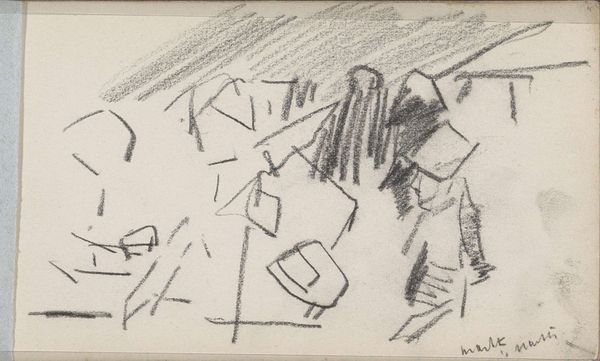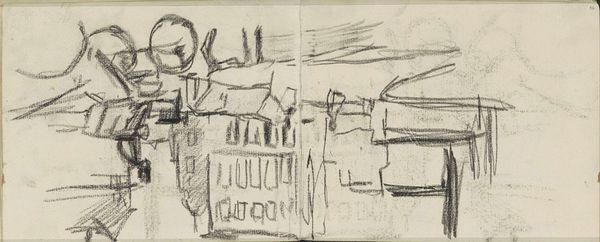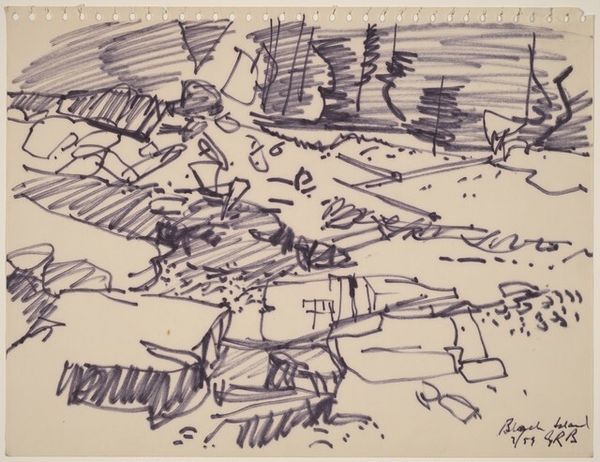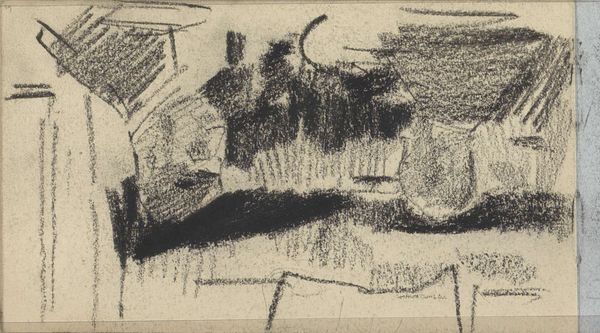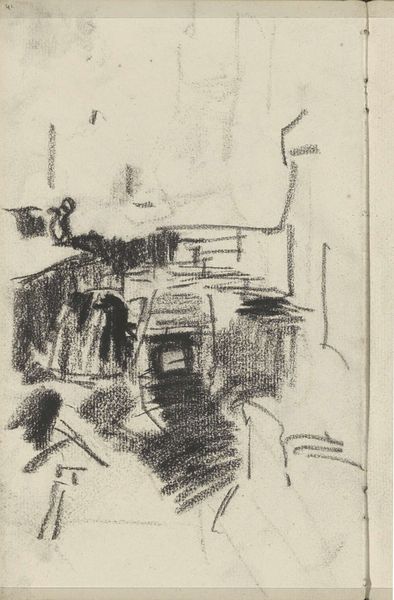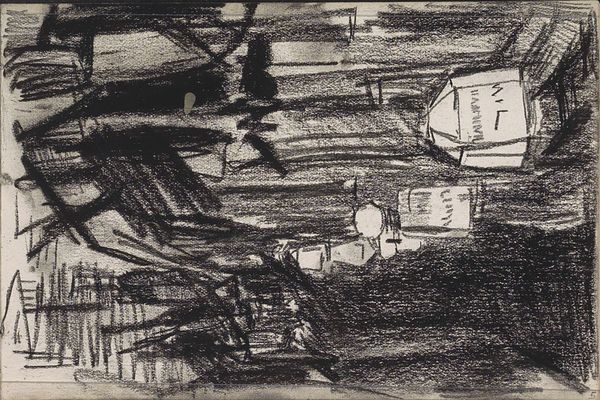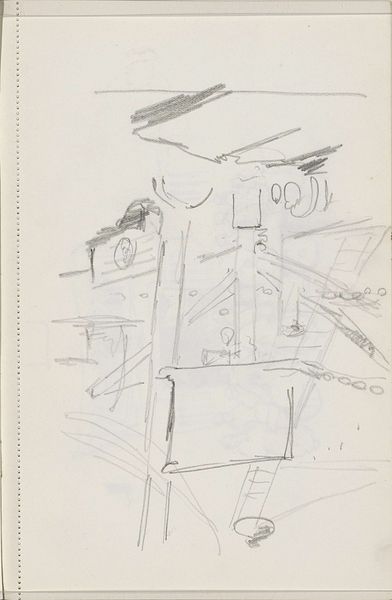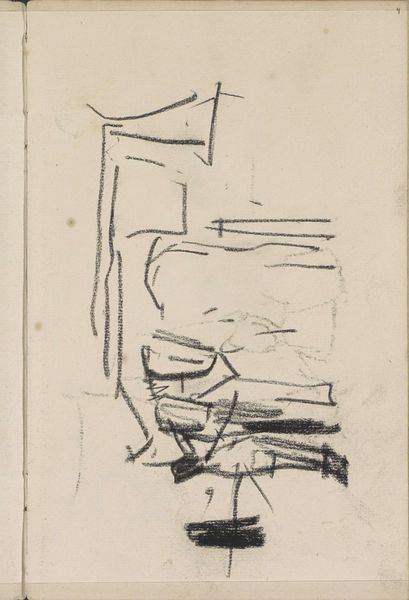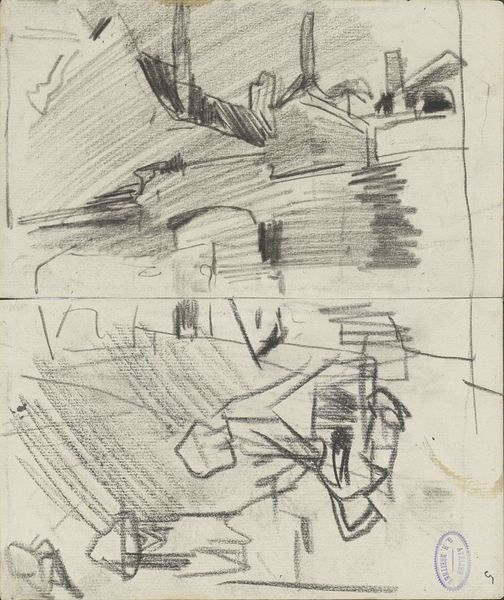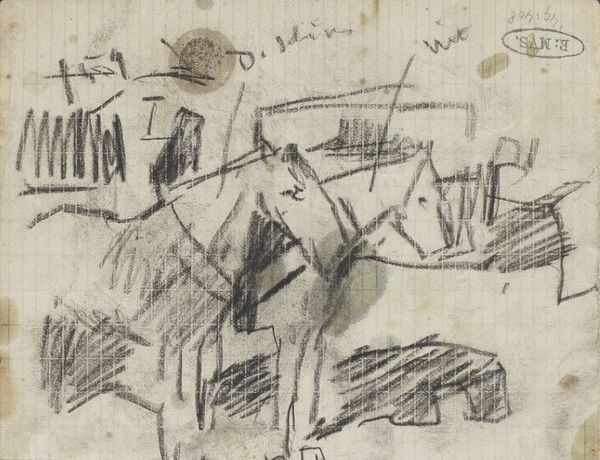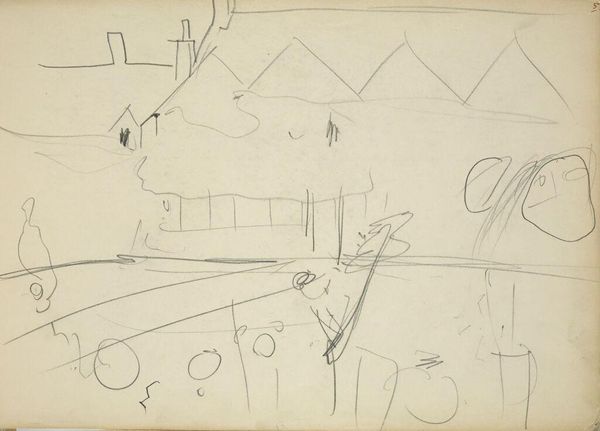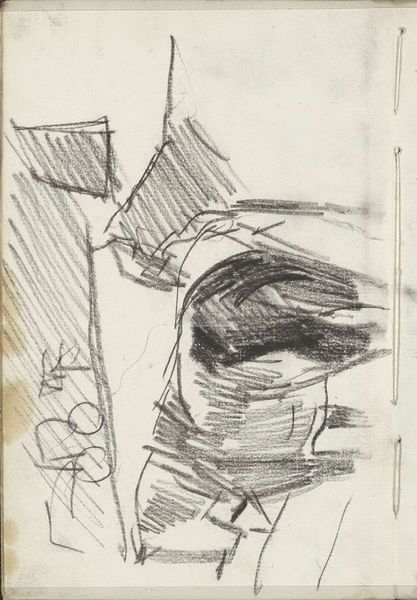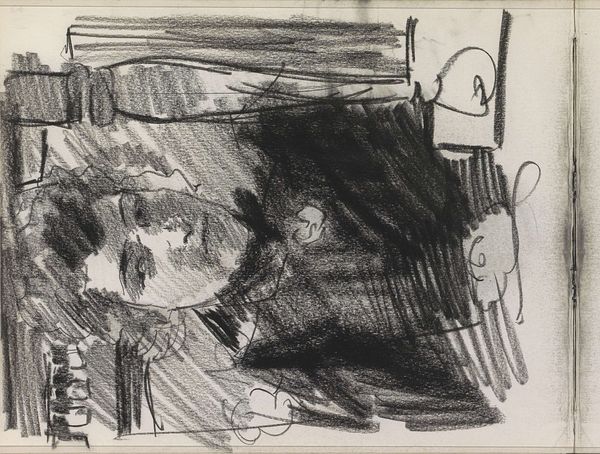
drawing, charcoal
#
drawing
#
cubism
#
geometric
#
cityscape
#
charcoal
Dimensions: 21.5 x 27 cm
Copyright: Pablo Picasso,Fair Use
Editor: This is Picasso's "Café in Royan," a charcoal drawing from 1940. The stark contrasts and fragmented forms create quite a chaotic feel, even though it depicts an everyday scene. How do you interpret this work, especially given the context of its creation? Curator: Well, focusing on the materiality, look at the charcoal itself. A readily available, inexpensive medium, perhaps indicative of wartime resourcefulness or even scarcity. The choice of charcoal underscores a direct connection to the physical act of drawing, of immediate mark-making. Editor: So, the limitations might have shaped the art? Curator: Precisely. The Cubist style, pushed further here, dissects and reassembles the cafe, echoing the fracturing of society during the war. Notice how the geometric forms and the almost industrial depiction of buildings minimize any sense of leisure or comfort that one might typically associate with a cafe. Do you see that also? Editor: Yes, it's like the café has been deconstructed, its purpose almost negated by the harshness of the lines and angles. There's a rawness here I wouldn’t necessarily associate with a leisurely cafe scene. Curator: Exactly. Picasso is using these materials, the charcoal and paper, within a specific historical context, to dismantle the conventional image of a gathering place and reflect something far more profound about the state of the world at that time. He makes visible the tensions present in daily life. Editor: I see it differently now. It's not just a drawing of a café but a commentary on the period, laid bare through the choice of materials and the artistic process itself. Thanks for pointing that out! Curator: My pleasure! Examining art through its material construction and production opens so many interpretive avenues. It offers a new insight into not just art history but cultural history more generally.
Comments
No comments
Be the first to comment and join the conversation on the ultimate creative platform.
